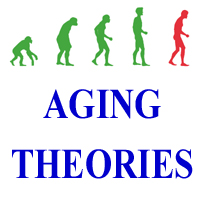 Thinking about theories of aging in humans and other mammals in the academic gerontology and more general bioscience community now centers around two concepts: Aging (and an organism-design-limited lifespan) is genetically programmed and an adaptation because limiting lifespan created an evolutionary advantage, or, it is not. Opinions in the gerontology community tend to be highly polarized on this issue.
Thinking about theories of aging in humans and other mammals in the academic gerontology and more general bioscience community now centers around two concepts: Aging (and an organism-design-limited lifespan) is genetically programmed and an adaptation because limiting lifespan created an evolutionary advantage, or, it is not. Opinions in the gerontology community tend to be highly polarized on this issue.
Members of the programmed aging faction tend to think that current published science overwhelmingly supports programmed aging.
Many members of the non-programmed faction consider programmed aging to be scientifically ridiculous because it conflicts with evolution theory as generally understood. Some non-programmed proponents have compared programmed aging to popular but scientifically ridiculous concepts about evolution such as creationism and intelligent design. Non-programmed aging is still more popular in the academic community and general science-aware public but programmed aging provides a better match to empirical evidence.
Life in the academic world is very public; we could say “publish or perish.” The scientific journal system including peer review is widely seen as necessary to maintain scientific integrity, especially for articles describing experimental or observational results and procedures. However, the system is less amenable to theoretical work. The “peer” review process tends to work against publication of new or unpopular ideas and some gerontology journals effectively will not accept articles that favorably describe programmed aging. Gerontology journal editorial boards are usually staffed by senior people who tend to follow older theories, in this case non-programmed theories, and often contain dedicated proponents of and even authors of non-programmed theories. This creates a rather hostile academic work environment for one considering performing research in programmed aging. Publicly declaring a belief in programmed aging could well amount to career suicide if one’s boss or institution thinks that programmed aging is “nuts.” Few researchers can afford to follow such a path.
In addition, the vast majority of the science-aware general public has essentially been trained to believe in non-programmed aging. No institution wants to be seen as performing research that is widely seen as scientifically ridiculous. Funding sources do not want to be seen as funding junk science.
Only a few research institutions publicly support the idea that human aging is genetically programmed because such a design created an evolutionary advantage. One such is Moscow State University.
This creates a situation where some researchers are performing research that does not make any sense under non-programmed theories but scrupulously avoid controversial terminology such as “programmed aging” or worse yet “suicide mechanism.” One sees creative ways of “finessing” this issue such as journal articles with titles along the lines of “Semi-programmed non-programmed aging.”
Nobel-prize-winning physicist Max Planck famously said: “A new scientific truth does not triumph by convincing its opponents and making them see the light, but rather because its opponents eventually die, and a new generation grows up that is familiar with it.” Younger researchers are more likely to follow programmed aging concepts.
One workaround for the journal problems that has proved successful is for a journal to host a special issue to specifically compare opposing schools of thought, in this case programmed vs. non-programmed aging. Authors for both sides can then be assured that their review is going to be performed by someone who is in their faction and that therefore rejection is not preordained. In addition this creates a useful “shoot out” context where readers can compare multiple pro and con arguments. See example [1]. Note that this requires the journal to concede that programmed aging has attained a level of scientific plausibility that at least justifies serious discussion. Some journals (like Elsevier Medical Hypotheses) are specifically designed to allow reviewed publication of unpopular theories using a modified review process.
Until about 2005 many senior gerontologists dismissed programmed aging as ridiculous and “impossible” without providing any attempt at serious rebuttal or refutation of arguments and claims by programmed aging proponents. However, some senior non-programmed proponents now concede that programmed aging is possible “under certain circumstances’ and are arguing details, a significant change in attitude [2].
NIH PubMed now (Jan 2018) shows 1323 articles in a search for “programmed aging.”
Conclusion: No one would be surprised if the endless academic arguments regarding the programmed vs. non-programmed nature of aging continued for another 150 years! However, venues for publication of programmed aging articles are increasing and the programmed aging faction is growing in size, popularity, and impact. The research environment in the commercial world (e.g. pharmaceutical companies) is much more favorable to programmed aging as will be discussed in a companion article.
[1] Current Aging Science Vol 8 Nr1 Programmed vs. non-programmed aging, 2015, Libertini G. ed. open access
[2] Curr Biol. 2011 Sep 27;21(18):R701-7. Kirkwood TB, Melov S. On the programmed/non-programmed nature of ageing within the life history.

I agree that an aging program would operate by causing or allowing damage. See article at: http://www.azinet.com/aging/Goldsmith_RegulatedBM2017.pdf
I think this sort of program provides the best match to empirical evidence.
While I would agree that programmed aging theories used to dominate I believe the damage based view is catching up fast now. I would use the Hallmarks of Aging as a prime example of this, one of the most cited papers in gerontology. It also marries damage and some elements of programmed aging into one theory which is very popular in aging research.